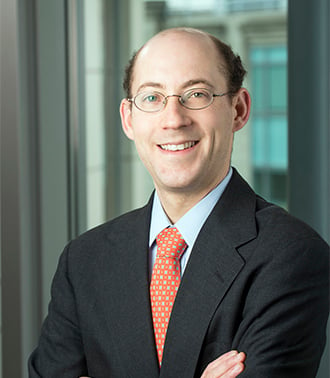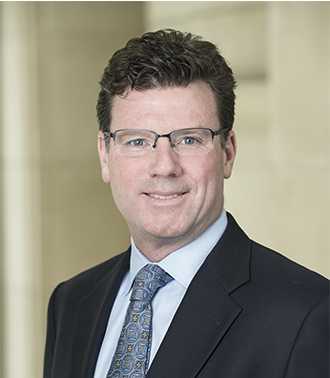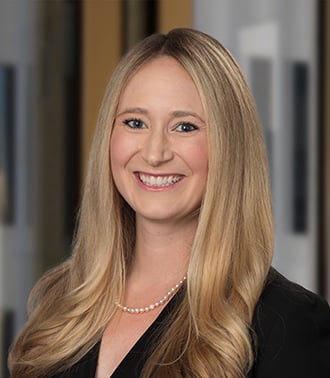Government Contractors - Get Prepared For Paid Sick Leave
On September 29, 2016, the Department of Labor (DOL) issued its Final Rule on regulations to implement Executive Order 13706, Establishing Paid Sick Leave for Federal Contractors. We previously discussed the Proposed Rules in another Advisory. The Final Rule requires federal contractors to give employees working on covered contracts at least seven days (56 hours) of paid sick leave annually. The DOL estimates that a total of 1.7 million employees will be affected by the Final Rule, with 345,000 employees potentially impacted in the first year. Below, we highlight some of the key aspects of the 466-page rule and its effect on covered contractors.
When Does The Final Rule Go Into Effect?
The Final Rule, published in the Federal Register on September 30, 2016, applies to all covered contracts issued on or after January 1, 2017. For procurement contracts subject to the Federal Acquisition Regulation (FAR) and Executive Order 13706, the Final Rule will become effective after the FAR Council issues regulations to provide for the inclusion of the contract clause in Executive Order 13706 in federal procurement solicitations and contracts subject to Executive Order 13706. The FAR Council is required to issue these regulations within 60 days of the Rule’s issuance. The DOL will publish a document in the Federal Register to announce the applicability date for these contracts.
What Contracts Are Covered By The Final Rule?
The Final Rule covers any new contract or contract-like instrument with the federal government issued on or after January 1, 2017, as well as subcontracts, provided that: (i) it is (A) a procurement contracts for construction covered by the Davis-Bacon Act (DBA); (B) a contract for services covered by the Service Contract Act (SCA); (C) a contract for concessions; or (D) a contract in connection with federal property or lands and related to offering services for federal employees, their dependents, or the general public; and (ii) the wages of employees under such a contract or contract-like instrument are governed by the DBA, SCA, or Fair Labor Standards Act (FLSA), including employees who qualify for an exemption from the FLSA’s minimum wage and overtime requirements. The Final Rule only applies to contracts performed within the United States. The Final Rule defines “contractor” broadly to include both a prime contractor and all of its subcontractors on any tier on a contract with the federal government.
The Final Rule does not apply to grants; contracts and agreements with and grants to Indian Tribes under the Indian Self-Determination and Education Assistance Act, as amended; and certain contracts specifically excluded under the Final Rule.
How Is Paid Sick Leave Accrued?
- All employees working “on or in connection with” covered contracts, including those employees exempt from overtime, and part-time employees, must accrue at least one hour of paid sick leave for every 30 hours worked on the covered contracts, up to seven days (or 56 hours) of paid sick leave annually. An employee whose work is in connection with a covered contract (i.e., necessary to the performance of the contract but not the specific services called for by the contract) are only entitled to accrue leave if they spend at least 20 percent of their time in connection with covered contracts.
- A contractor may choose its own accrual year as long as it is consistent for all, or across similarly situated groups of, employees.
- For purposes of accrual, a contractor must aggregate an employee’s hours worked on or in connection with all covered contracts for that contractor. Contractors may also count all hours worked by an employee, regardless of whether they are on a covered contract. The Final Rule clarifies that only hours worked (and not all paid hours, such as time on paid leave) counts towards sick leave accrual.
- For exempt employees, a contractor can track the employee’s actual hours worked or assume that the employee works 40 hours on or in connection with a covered contract in each workweek.
- Accrued sick leave must carry over from year to year. Contractors may limit the amount of paid sick leave an employee is permitted to accrue to not less than 56 hours in each accrual year. Contractors may also prohibit an employee from having more than 56 hours of paid sick leave available for use at any point in time. However, paid sick leave carried over from the previous year cannot count toward any limits on annual accrual. In other words, an employee who carries over 50 hours of sick leave would stop accruing any additional sick leave in the next year once they reach 56 hours, but would begin accruing again once they fall below 56 hours (and would have the opportunity to use sick leave and accrue up to 56 new hours of sick leave in the second year).
- Contractors also have the option of front loading sick leave by providing the employee with at least 56 hours of paid sick leave at the beginning of each year. If a contractor front loads sick leave, it need not comply with the requirements regarding accrual calculation. The contractor may limit the amount of paid sick leave an employee may carry over to no less than 56 hours, but it may not limit the amount of paid sick leave an employee has available for use at any point (for example, an employee who carries over all 56 hours would receive an additional 56 hours in the next year, for a total of 112 available, but could only carry over 56 into the year after that). Employees hired after the beginning of the accrual year may receive a prorated amount of paid sick leave based on the number of pay periods remaining in the accrual year.
What Are The Obligations Of Covered Contractors?
Contractors working on covered contracts must also comply with the following requirements:
- Upon an employee’s separation from employment, a covered contractor may, but is not required to pay the employee for any unused accrued sick leave. However, paid sick leave must be reinstated for employees rehired by a covered contractor within 12 months after a job separation.
- Any covered contract must include a contract clause that specifies employees must earn not less than 1 hour of paid sick leave for every 30 hours worked. For procurement contracts subject to the FAR, contracting agencies must use the clause set forth in the FAR developed to implement the Order.
- Contractors must notify all employees performing work on or in connection with a covered contract of the paid sick leave requirements by posting a notice provided by the DOL in a prominent and accessible place at the worksite.
- A contractor must provide an employee with written notification of the amount of unused accrued paid sick leave (i) once per pay period or per month (whichever is shorter), (ii) upon separation from employment, and (iii) upon reinstatement of paid sick leave for employees rehired within 12 months after a job separation. However, contractors who provide employees with electronic access to their leave balance and accrual do not need to provide employees with monthly written notices.
- Contractors must make and maintain records containing information required by the Order and Final Rule during the course of the covered contract and preserve for no less than three years thereafter. Among other things, contractors must maintain records of notifications to employees of the amount of sick paid leave accrued, any requests to use paid sick leave, dates and amounts of paid sick leave used by employees, and any written responses to employees’ requests to use paid sick leave.
- A covered contractor cannot interfere with an employee’s accrual or use of paid sick leave. A contractor may not discriminate against an employee for (i) using, or attempting to use, paid sick leave; (ii) filing any complaint, initiating any proceeding, or otherwise asserting any right or claim under the Order and Final Rule; (iii) cooperating in any investigation under the Order and Final Rule; or (iv) informing any other person about his or her rights under the Order and Final Rule. The Secretary of Labor is authorized to investigate potential violations of and ensure compliance with the Order and Final Rule.
- A contractor’s existing leave policy will be in compliance if it offers equal or greater benefits and rights to employees. Further, nothing in the Final Rule supersedes any applicable local, state, or federal law, or a collective bargaining agreement requiring greater leave rights.
When Can Employees Use Paid Sick Leave?
- Employees may use paid sick leave for an absence resulting from: (i) the employee’s physical or mental illness, injury, or medical condition; (ii) obtaining diagnosis, care, or preventative care from a health care provider; (iii) caring for the medical needs of a child, a parent, a spouse, a domestic partner, or any other individual related by blood or affinity whose close association with the employee is the equivalent of a family relationship; or (iv) addressing the consequences of domestic violence, sexual assault, or stalking, including preparation for or participation in any related civil or criminal legal proceeding.
- An employee’s request to use paid sick leave may be made orally or in writing, and need not include a specific reference to the Order and Final Rule or even use the words “sick leave.” If the need to use paid sick leave is foreseeable, the employee must request the leave at least seven calendar days in advance. If the employee cannot give seven days’ notice, the request must be made as soon as is practicable.
- A contractor cannot make an employee’s use of paid sick leave contingent on the employee’s finding a replacement worker to cover his or her absence or the fulfillment of the contractor’s operational needs.
- Any denial of paid sick leave must be made in writing and explain the reason for the denial.
- A contractor may require certification from a health care provider only if the employee is absent three or more consecutive workdays.
How Can Contractors Prepare For Implementation Of The Final Rule?
Because the Final Rule applies to federal contracts issued on or after January 1, 2017, contractors must move quickly to bring their contracts and leave policies into compliance. Contractors should determine whether any of their contracts are covered by the Final Rule or if they fall under one of the enumerated exclusions. Covered contracts might need to be revised to include the required contracts clause notifying employees of their paid sick leave rights. For employees working on such covered contracts, contractors must ensure that those employees accrue at least one hour of paid sick leave for every 30 hours of work.
Alternatively, the contractor can provide its employees with at least 56 hours of paid sick leave at the beginning of each accrual year. Finally, contractors should review and update their leave policies and establish procedures for creating and maintaining the required records, and post the required notice.



